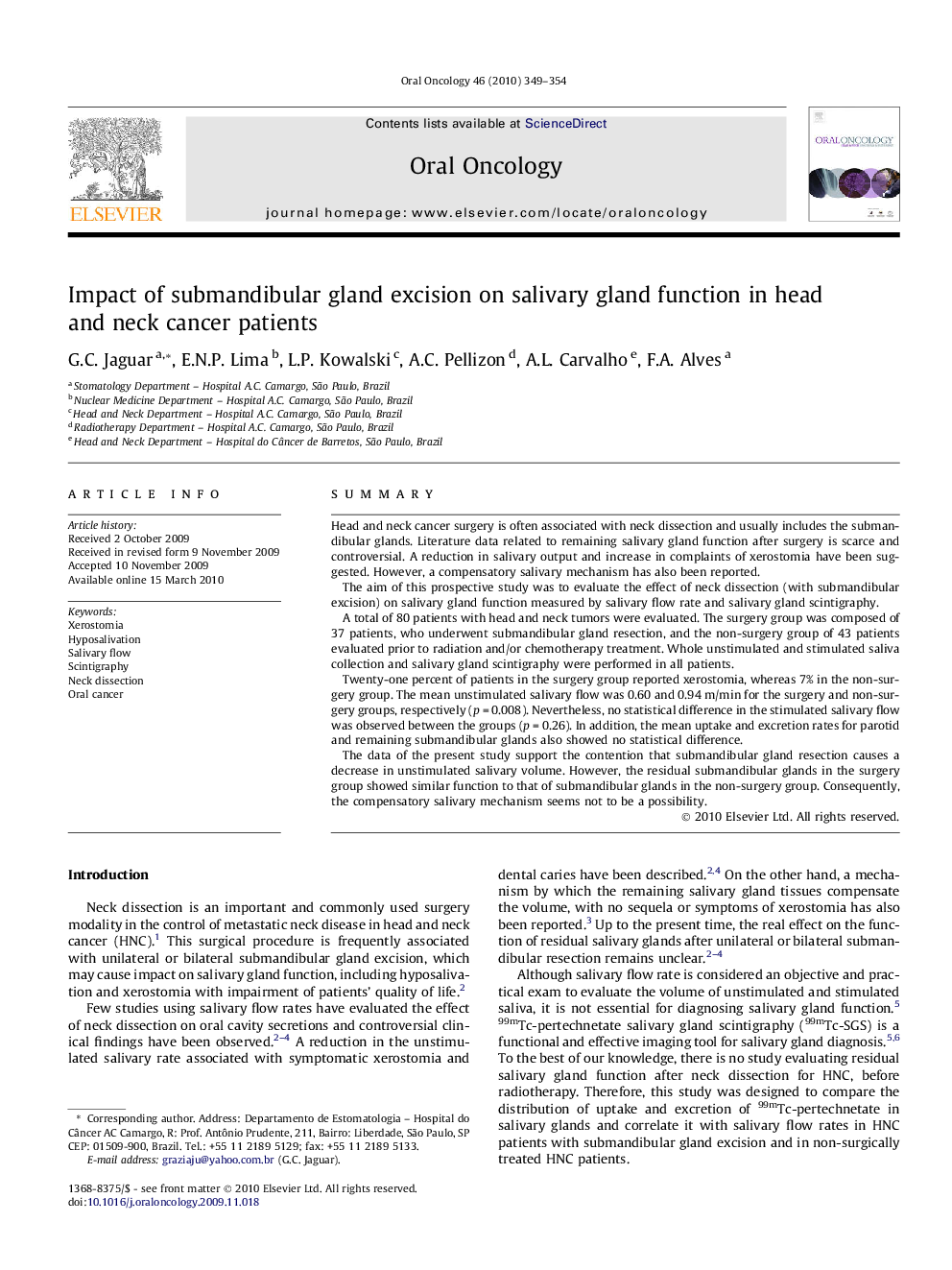| Article ID | Journal | Published Year | Pages | File Type |
|---|---|---|---|---|
| 3165079 | Oral Oncology | 2010 | 6 Pages |
SummaryHead and neck cancer surgery is often associated with neck dissection and usually includes the submandibular glands. Literature data related to remaining salivary gland function after surgery is scarce and controversial. A reduction in salivary output and increase in complaints of xerostomia have been suggested. However, a compensatory salivary mechanism has also been reported.The aim of this prospective study was to evaluate the effect of neck dissection (with submandibular excision) on salivary gland function measured by salivary flow rate and salivary gland scintigraphy.A total of 80 patients with head and neck tumors were evaluated. The surgery group was composed of 37 patients, who underwent submandibular gland resection, and the non-surgery group of 43 patients evaluated prior to radiation and/or chemotherapy treatment. Whole unstimulated and stimulated saliva collection and salivary gland scintigraphy were performed in all patients.Twenty-one percent of patients in the surgery group reported xerostomia, whereas 7% in the non-surgery group. The mean unstimulated salivary flow was 0.60 and 0.94 m/min for the surgery and non-surgery groups, respectively (p = 0.008). Nevertheless, no statistical difference in the stimulated salivary flow was observed between the groups (p = 0.26). In addition, the mean uptake and excretion rates for parotid and remaining submandibular glands also showed no statistical difference.The data of the present study support the contention that submandibular gland resection causes a decrease in unstimulated salivary volume. However, the residual submandibular glands in the surgery group showed similar function to that of submandibular glands in the non-surgery group. Consequently, the compensatory salivary mechanism seems not to be a possibility.
